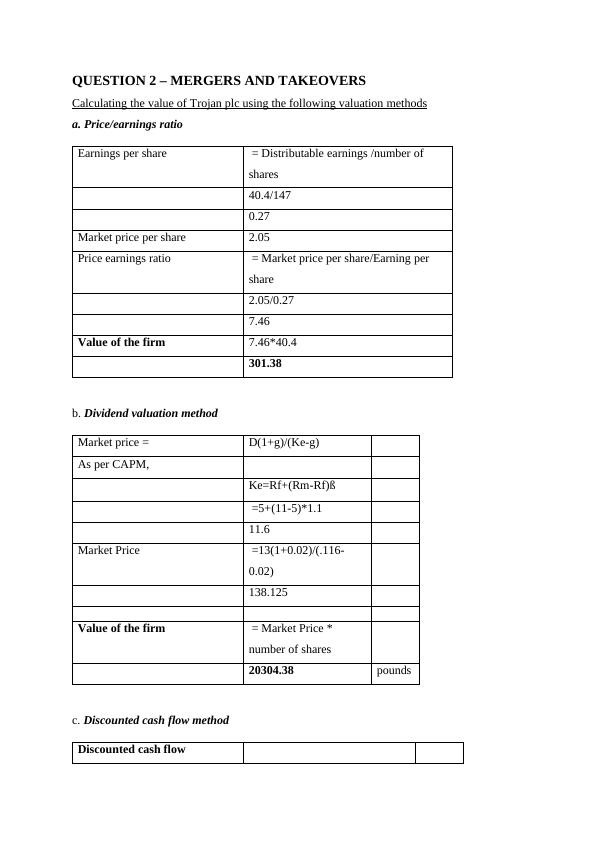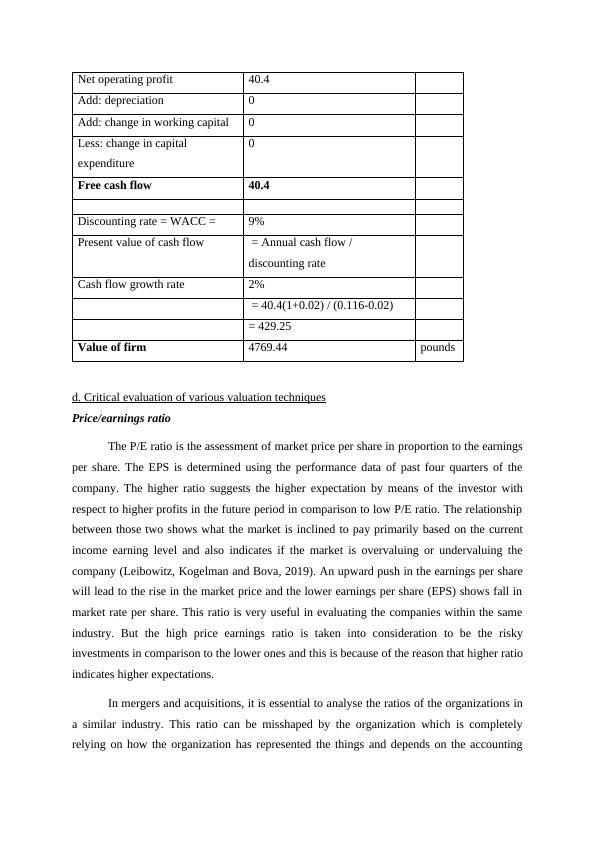Valuation Methods in Financial Management
Discuss factors to consider in dividend policy decision-making for a listed company.
14 Pages3823 Words38 Views
Added on 2023-01-11
About This Document
This document discusses various valuation methods used in financial management, such as price/earnings ratio, dividend valuation method, and discounted cash flow method. It provides step-by-step calculations for determining the value of a firm using these methods. The document also explores the benefits and limitations of each technique. Additionally, it covers topics related to mergers and takeovers, as well as investment appraisal techniques like payback period, accounting rate of return, net present value, and internal rate of return.
Valuation Methods in Financial Management
Discuss factors to consider in dividend policy decision-making for a listed company.
Added on 2023-01-11
ShareRelated Documents
End of preview
Want to access all the pages? Upload your documents or become a member.
Valuation Methods for Trojan plc
|14
|3957
|67
Financial Management: Valuation Techniques and Investment Appraisal
|15
|3763
|50
Valuation Techniques in Financial Management
|14
|3293
|31
Financial Management: Valuation of Companies and Investment Appraisal Techniques
|17
|4000
|45
Financial Management: Mergers and Takeovers, Investment Appraisal Techniques
|17
|3750
|53
Financial Management: Valuation Techniques and Investment Appraisal
|13
|3071
|61




